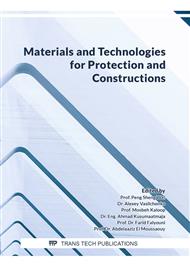p.41
p.49
p.55
p.60
p.65
p.73
p.79
p.85
p.93
Study on Grain Boundary Sensitization in Heat Affected Zone of Austenitic Stainless Steel and its Evaluation Method
Abstract:
In this paper, the simulated welding structure at different areas of heat affected zone (HAZ) of austenitic stainless steel are prepared by heating furnace, and the deference of intergranular corrosion resistance of all samples were determined by comparative methods of oxalic acid etching, hot-acid test and electrochemical potentiodynamic reactivation tests (EPR), and the effectiveness of all those methods were analysis and determination at the same time. The result shows that the susceptibility degree at different areas of HAZ increased with the heating temperature increase, but all structures can pass hot-acid test and EPR test, indicating that it could maintain good performance of intergranular corrosion resistance. The hot-acid test results have good consistency with EPR test , but inconsistent with oxalic acid etching test. The results show that the evaluation of oxalic acid etching is too much strict to be used as a judgment method, so that not suitable of use for inspection.
Info:
Periodical:
Pages:
65-69
Citation:
Online since:
July 2022
Authors:
Keywords:
Price:
Сopyright:
© 2022 Trans Tech Publications Ltd. All Rights Reserved
Share:
Citation:



